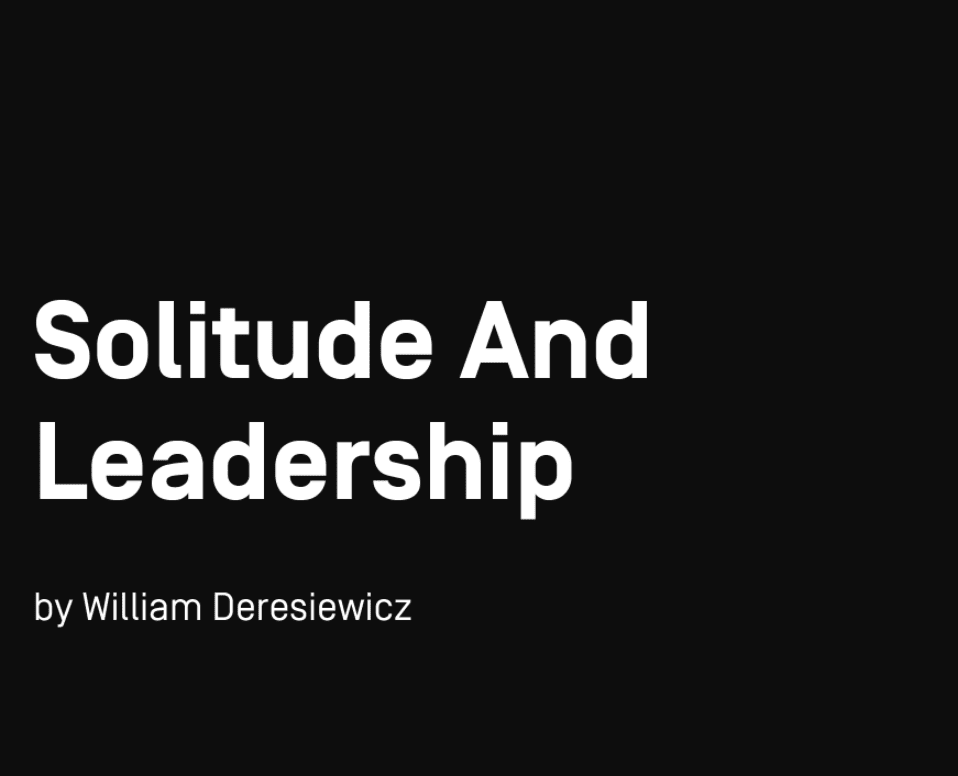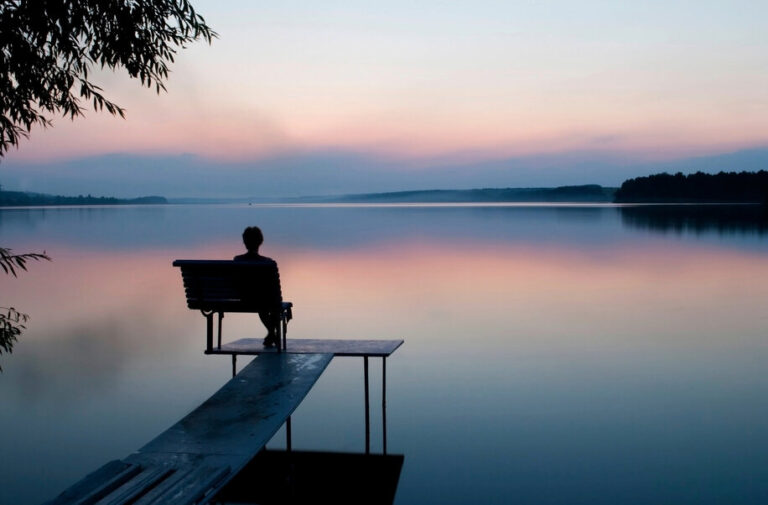Solitude is from Latin solitudinem (nominative solitudo) and Old French solitude “loneliness” (14c.). It is a state of being alone or remote from society. Most of us got a real glimpse of what it means to be alone for a long period of time during the COVID-19 pandemic lock down. Solitude is different from Loneliness: It involves being alone without feeling lonely, while loneliness is often a state of isolation. As the 2020 pandemic showed, solitude can bring out the best in us through more self-introspection or self-awareness, and it can also make us engage in destructive or negative behaviour that might not be in alignment with our ultimate purpose in life.
I often start my day with a 30-40-minute meditation practice, an opportunity to be grounded and introspect in solitude. This practice is one of the most exciting habits that I am most proud of developing in the past two years. The daily solitude practice allows me to focus on the here and now by focusing on my breathing, which is very handy in tough emotional situations, such as when anger is festering or when biting my tongue before saying something. One of the reasons that the internet and social media appeal to most of us is that we can not stand being with our thoughts or being in solitude for more than 10 minutes. The Internet provides a throve of activities and mediums for us to run from ourselves, numb our pain, and hide from dealing with our trauma; hence, we are seduced by the allure of Internet fame and virality.
True leadership means being able to think for yourself and act on your convictions.

Solitude and Leadership by William Deresiewicz 1
My title must seem like a contradiction. What can solitude have to do with leadership? Solitude means being alone, and leadership necessitates the presence of others—the people you’re leading.
Thinking means concentrating on one thing long enough to develop an idea about it. Not learning other people’s ideas, or memorizing a body of information, however much those may sometimes be useful. Developing your own ideas. In short, thinking for yourself. You simply cannot do that in bursts of 20 seconds at a time, constantly interrupted by Facebook messages or Twitter tweets, or fiddling with your iPod, or watching something on YouTube.
Unless you know who you are, how will you figure out what you want to do with the rest of your life? Unless you’re able to listen to yourself, to that quiet voice inside that tells you what you really care about, what you really believe in
The position of the leader is ultimately an intensely solitary, even intensely lonely one. However many people you may consult, you are the one who has to make the hard decisions. And at such moments, all you really have is yourself.
Leadership means finding a new direction, not simply putting yourself at the front of the herd that’s heading toward the cliff.
Courage and Solitude: The Courage to Stand Alone
Courage is not the absence of fear but the ability to feel fear and do what you fear anyway. Courage is the ability to live life on your convictions and stand alone for what you believe in. It is the ability to speak even when your voice quivers and do what is right, even when society ostracizes, criticizes, and bans you from the herd. As Martin Luther Jnr. once said, “There comes a time when we must take a position that is neither safe, nor politic, nor popular, but one must take it because it is right.”
Courage is an inner resolution to go forward despite obstacles; Cowardice is submissive surrender to circumstances. Courage breeds creativity; Cowardice represses fear and is mastered by it. Cowardice asks the question, is it safe? Expediency ask the question, is it politic? Vanity asks the question, is it popular? But conscience ask the question, is it right? And there comes a time when we must take a position that is neither safe, nor politic, nor popular, but one must take it because it is right.
Meditations
Daily Calm with Tamara Levitt – Leaders
During particularly difficult times, protective walls can be useful, creating a safe container in which we can heal. However, once the challenges have passed, it is important to shed away the protective layer we no longer need. Otherwise, it not only keeps people and experiences out, but it also keeps us locked in, holding us back from our growth.
Dismantling this wall can feel daunting but it doesn’t have to happen all at once. First we become aware of these walls and we consciously choose to open ourselves up. And the day came when the risk to remain tight in a bud was more painful than the risk it took to blossom. Life is a process of becoming, a combination of states we must go through. Where people fail is when they wish to elect a state and remain in it. This is a kind of death.
Living never wore one out so much as the effort not to live. Life is truly known only to those who suffer, lose, endure adversity and stumble from defeat to defeat. Perfection is static, and I am in full progress. Abnormal pleasures kill the taste of normal ones. -Anais Nin
Daily Jay with Jay Shetty – The Museum of Failure
It takes 20 to 30 years to become an overnight success. Anyone you see achieving great things, breaking barriers, and winning awards has made mistakes. They’ve suffered defeat, but when plans went awry, they found new opportunities, many of which wouldn’t have been possible without their earlier blunders.
The Museum of Failure is a touring exhibition museum that features a collection of failed products and services. It first opened in Sweden in 2017. Since then, it’s travelled the world sharing misfires and mistakes, ideas ranging from Google Glass to Apple’s Newton. It is a wonderful testament to human ingenuity gone wrong. Innovation and progress require an acceptance of failure; the museum aims to stimulate productive discussion about failure and inspire us to take meaningful risks.
“It’s only those who do nothing that make no mistakes, I suppose.” ― Joseph Conrad, An Outcast of the Islands
Daily Trip with Jeff Warren – Simplicity
Our practices are the habits we choose, shaping who we are and want to become. Simplicity of seated meditation: Body still, mind awake, minimal external distractions, no special movements to remember and no complex tasks. The habit of being open to the present moment as exactly as it is and not needing it or ourselves to be any different. It is the habit of peace, trust, and unshakeable standing. Equanimity is the subtle skill of being open to everything in our immediate experience, including imperfections.
Podcast
- Less competition, more creation with Renée Mauborgne | How I Built This with Guy Raz
All the best in your quest to get better. Don’t Settle: Live with Passion



Comments are closed.